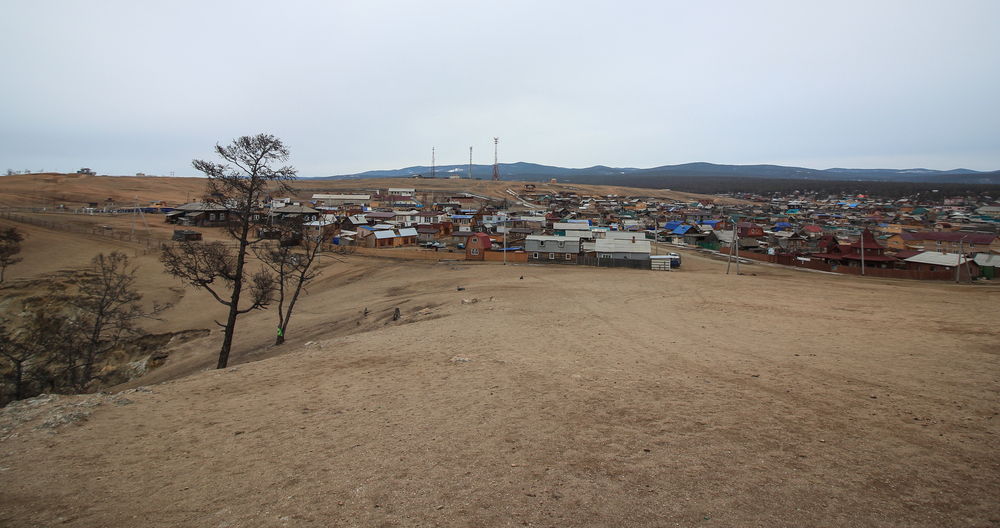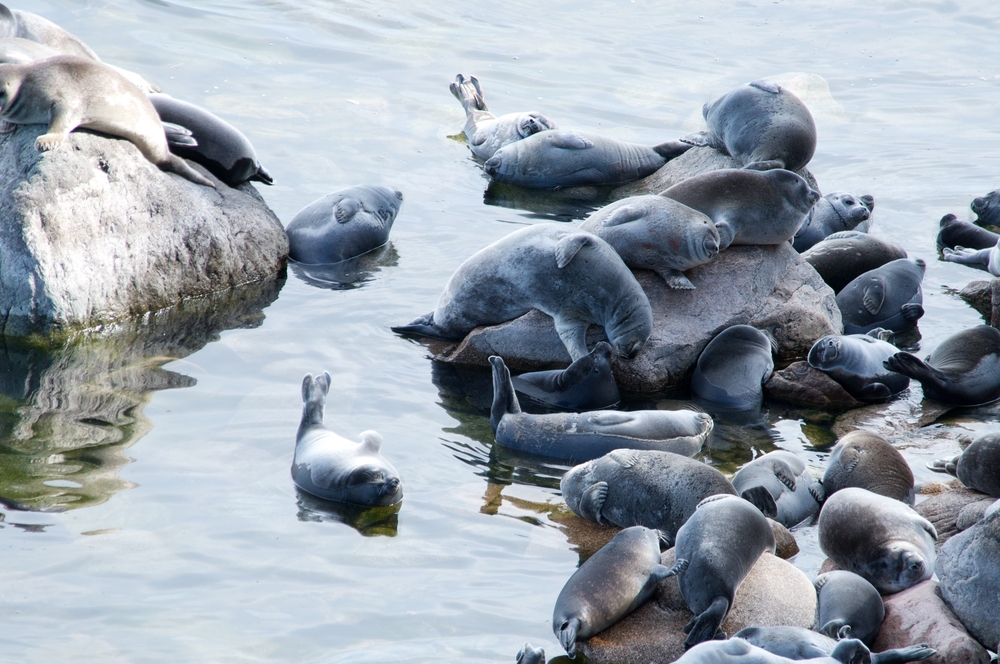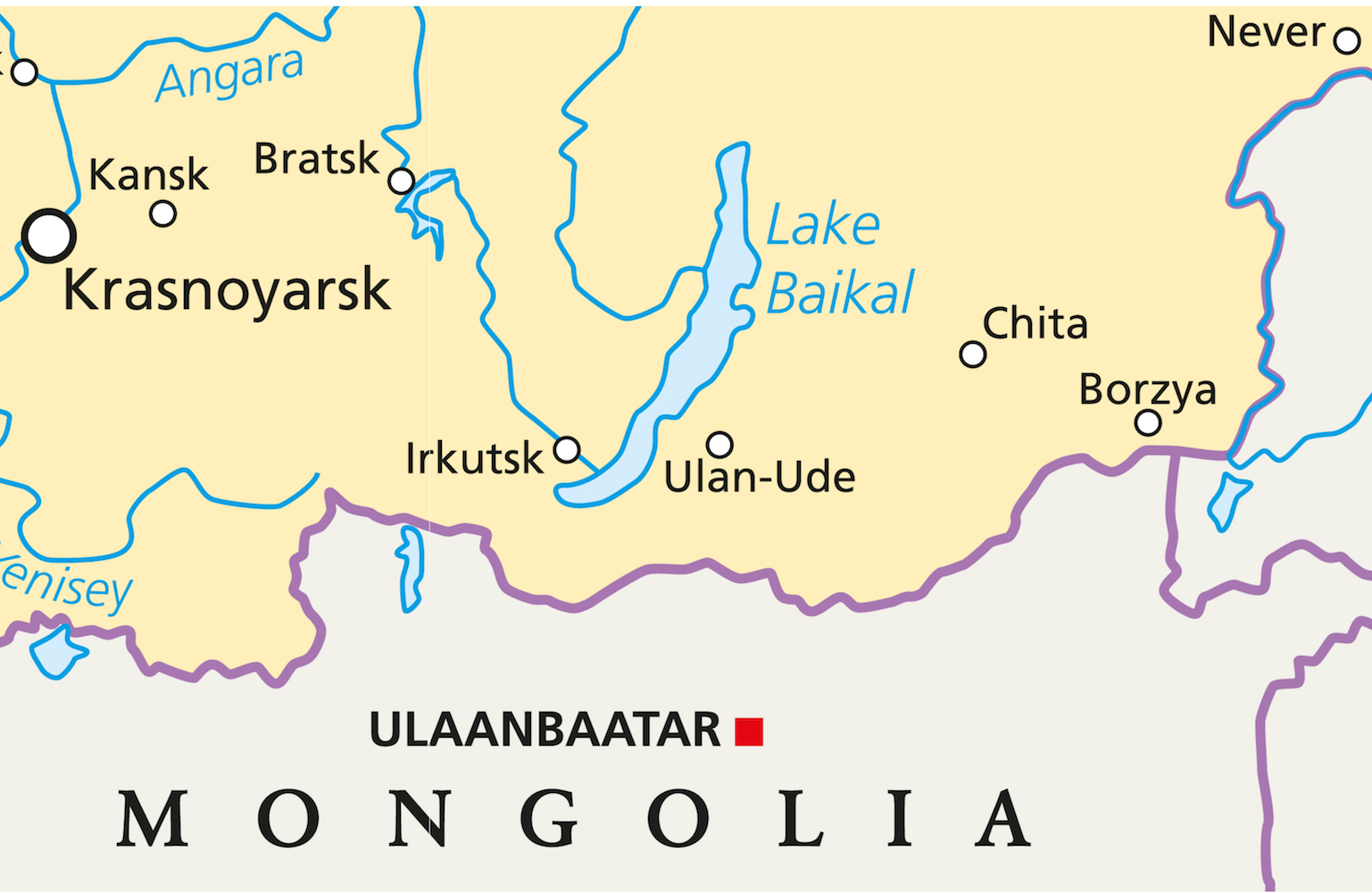Lake Baikal: World's Largest, Deepest Lake

Lake Baikal is the largest freshwater lake in the world (by volume) and the world's deepest lake. Somewhat crescent shaped, it is in the southern Siberia area of Russia. In 1996 it was declared a UNESCO World Heritage Site.
"Lake Baikal is the oldest lake in the world. It is home to approximately 1,700 to 1,800 endemic plant and animal species," said Jennifer Castner of Pacific Environment's Russia program. Additionally, it holds 20 percent of the world's fresh water, due to the lake's depth.
By the numbers
Volume: 5,521 cubic miles of water (23,013 cubic kilometers). This volume is approximately equivalent to all five of the North American Great Lakes combined, according to Geology.com.
Maximum depth: 5,354 feet (1,632 meters). Its lowest point lies more than 4,000 feet (1,219 m) below sea level, according to Smithsonian magazine.
Average depth: 2,442 feet (744 m), according to Smithsonian magazine.
Surface area: 12,248 square miles (31,722 square km), according to Smithsonian magazine. This area puts it in seventh place worldwide in terms of surface area, according to Geology.com.
Length: 397 miles (640 km), according to Lake Baikal.org.
Get the world’s most fascinating discoveries delivered straight to your inbox.
Maximum width: 49 miles (79.5 km), according to Baikal World Web.
Average width: 29 miles (47 km), according to Baikal World Web.
Minimum width: 16 miles (25 km), according to Baikal World Web.
Coastline area: 1,300 miles (2,100 km), according to Lake Baikal.org.
Lake Baikal location
Lake Baikal is located in south-central Russia near the Mongolian border. The largest nearby city is Irkutsk. Lake Baikal has historically played a large role in the Russian imagination. It represents the unspoiled beauty of Russia and is sometimes referred to as the Sacred Sea. Lake Baikal plays a central part in many local creation myths and appears throughout Russian folklore, according to Baikal Nature. Lake Baikal attracts more than 500,000 tourists a year, according to the Siberian Times.
Though it is in southern Siberia, the lands around Lake Baikal are generally warmer than the rest of the area because large bodies of water have a moderating force, according to LakeBaikal.org.
Lake Baikal features
There are 27 mostly uninhabited islands in Lake Baikal, according to Lake Baikal.org. The largest is 45-mile-long (72 km) Olkhon, on which there are villages. About 1,500 people live there.
More than 300 streams and rivers feed into Lake Baikal, but the Angara River is the only outlet. It carries out about 60 cubic km (15.8 trillion gallons) of water per year into the Yenisei River. Eventually the water makes its way to the Arctic Ocean.
The Selenga River is the largest source of water coming into Lake Baikal. Flowing north from Mongolia, it contributes nearly 50 percent of the lake's water. Like Lake Baikal, the Selenga Delta is internationally recognized for its biodiversity and importance, according to the Ramsar Convention.
Lake Baikal is the only very deep lake to have oxygenated water at its lowest depths, like the ocean, according to a 2009 article in BioScience. Additionally, the earth under Lake Baikal is heated. The cause of the heat is unknown.
Lake Baikal is considered one of the clearest lakes in the world, according to CNN Traveler. During the summer, when the lake is full of melted ice from the Siberian mountains, it is sometimes possible to see more than 130 feet (39 m) down. The stunning clarity is the result of the melted ice's purity, plankton that eat floating debris and a lack of mineral salts in the lake.
Lake Baikal may be warmer than other parts of Siberia, but in the winter it still gets very cold. The average air temperature in winter is minus 6 F (minus 21 C). Despite its size, Lake Baikal freezes over in the winter and usually melts in May or June, according to LakeBaikal.org. The ice can be up to 6 feet (2 m) thick. In the summer, the average air temperature is 52 F (11 C). The water temperature in August is around 50 F (10 C).
Lake Baikal history
At least 25 million years old, Lake Baikal is the oldest lake in the world. It and the surrounding mountains were formed by the Earth's crust fracturing and moving. According to Baikal World Web, it was probably originally a riverbed, but tremors and fractures in the Earth's crust increased the size and widened the space between the shores. Parts of the Baikal basin developed at different times throughout the Tertiary Period (66 million to 2.6 million years ago). Melting glaciers also increased the water levels.
It is likely that a series of lakes, similar to the Great Lakes, developed first and then united in the Pliocene Epoch (5.3 to 2.58 million years ago), according to Baikal World Web. There are several theories about what could have caused the unification, including sinking earth, falling rocks, erosion and earthquakes. Likely, it was a combination of all factors.
Lake Baikal is in a rift valley and up to 2,000 earthquake tremors are detected each year. The earthquakes deepen the lake and increase its size. For example, an 1862 earthquake resulted in the creation of Proval Bay, according to Irkutsk.org.
According to the Baikal Center, some geophysicists think that Lake Baikal is an ocean being born. The shores drift farther apart by 2 cm (0.78 inches) a year, the same rate at which Africa and South America drift apart.
Indigenous communities have lived around Lake Baikal since at least the sixth century B.C., though they visited long before that. It was the site of a battle in the Han-Xiongu War (133 B.C. to A.D. 89). Local legend holds that Jesus visited Lake Baikal, according to Smithsonian magazine. The first European to visit Lake Baikal was the Russian Kurbat Ivanov in 1643. Russia expanded its territory to include Lake Baikal during the 17th-century Russian conquest of Siberia.
Lake Baikal ecosystem
According to the UNESCO World Heritage Commission, Lake Baikal is sometimes called the "Galapagos of Russia" because of its exceptional biodiversity and importance to evolutionary science. The age, isolation and deep oxygenated water of Lake Baikal have resulted in one of the world's richest freshwater ecosystems.
About 80 percent of the more than 3,700 species found at Lake Baikal are endemic, meaning they are found nowhere else on Earth. Probably the most famous of these species is the nerpa, the world's only exclusively freshwater seal. Scientists are unsure how the nerpa came to Lake Baikal and evolved, but they suspect the seals might have swum down a prehistoric river from the Arctic, according to LakeBaikal.org. Other endemic species include the oily, scaleless golomyanka fish and the omul, a white fish that is one of Lake Baikal's most famous dishes.
Other land-based species around Lake Baikal include bears, reindeer, elk, wild boar, Siberian roe deer, polecats, ermine, sable and wolves. American minks, imported from Canada, also live around Lake Baikal, according to Baikal World Web.
More than 50 species of fish live in Lake Baikal, according to Baikal World Web. Aquatic invertebrate species include more than 100 species of flat worms, more than 700 species of anthropods (insects, arachnids and crustaceans) and more than 170 species of mollusks. These invertebrates all help purify the water.
There are dozens of tree species, including cedar, fir and spruce, growing in the Lake Baikal area. Some of the trees are up to 800 years old. The Angara pine tree is native to the area, according to Baikal World Web.
Threats to Lake Baikal
As Russia and Mongolia have become increasingly industrialized and tourism has increased, Lake Baikal has faced more and more threats to its environment. Additionally, climate change is threatening its ecosystem. Water temperatures and ice cover have already changed, according to BioScience.
Castner described several of the dangers facing Lake Baikal. The biggest threat is probably the "huge problem with algae on the lake and government failure to develop an adequate response to it," she said. Massive green algae blooms plague bodies of water like the Great Lakes, but for a long time Russian scientists assumed that Lake Baikal was too big to be affected by them. But since at least 2008, Spirogyra algae blooms have appeared on the bottom of the lake, according to National Geographic. The algae blooms are found in shallow water and wash up on shore, where they emit a horrible stench.
The algae are toxic to other species. The algae have damaged water snails, sponges, fish and crustaceans — which pass the toxins along to people, according to the New York Times.
"The algae blooms are presumably caused by temperature changes, climate changes and excessive runoff into the lake from agricultural sewage and industrial sewage," Castner said. The concentration of algae in shallow water and the fact that algae blooms have historically appeared in areas with untreated sewage suggest that untreated sewage is a significant contributing factor to the problem. "But," Castner noted, "no proper study has been done to definitively determine the cause of the algae blooms."
She added, "There's a huge increase in tourism on shores all around the lake and there's not a real understanding of how that's affecting the lake." Local communities do not have adequate waste management systems relative to the number of tourists. But at least one effort to healthily manage tourists at Lake Baikal is succeeding: the Lake Baikal Trail, which will surround the entire lake, is being built slowly but surely.
"Another serious threat is a proposed series of dams on the Selenga River and its tributaries," Castner said. Mongolia is actively planning to build the dams in order to obtain energy. But the dams would seriously reduce the amount of fresh water flowing into the lake. In addition to lowering lake levels, the dams could change the level of sediment entering the lake and lessen the quality of breeding sites for birds and fish, as well as and block their migration routes, according to The New York Times.
Lake Baikal has successfully met environmental challenges in the past. In 2006, activists were able to get the government to completely reroute an oil pipeline. "It would have crossed into the lake's watershed in the north and come within 800 meters of the lake. It would have had devastating impacts," Castner said.
From 1966 to 2008, the Baikalsk Paper and Pulp Mill operated off the shores of Lake Baikal. "Paper-making and pulp-processing are water-intensive processes that involve using water and then dumping it," Castner explained. The dirty water was dumped into the lake, which resulted in a 12-square mile environmentally dead zone in the shallows. Community-led opposition led to valid studies of the problem and, though the government repeatedly delayed it, the mill was eventually shut down. Today, the environment in the water is slowly recovering. But the plant has not been demolished, the land around it has not been restored, and the chemicals around it have not been removed. The town is struggling economically.
Additional resources
Jessie Szalay is a contributing writer to FSR Magazine. Prior to writing for Live Science, she was an editor at Living Social. She holds an MFA in nonfiction writing from George Mason University and a bachelor's degree in sociology from Kenyon College.





